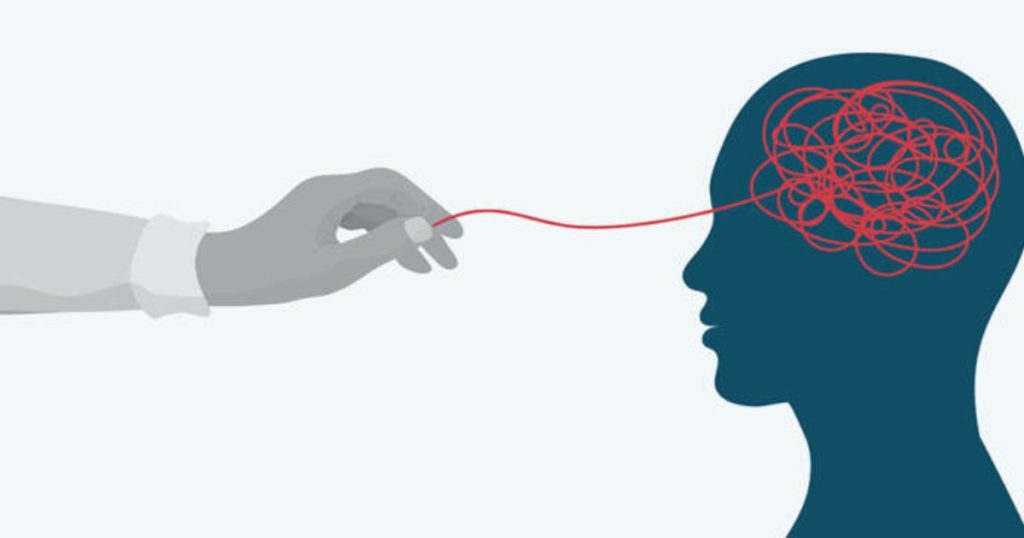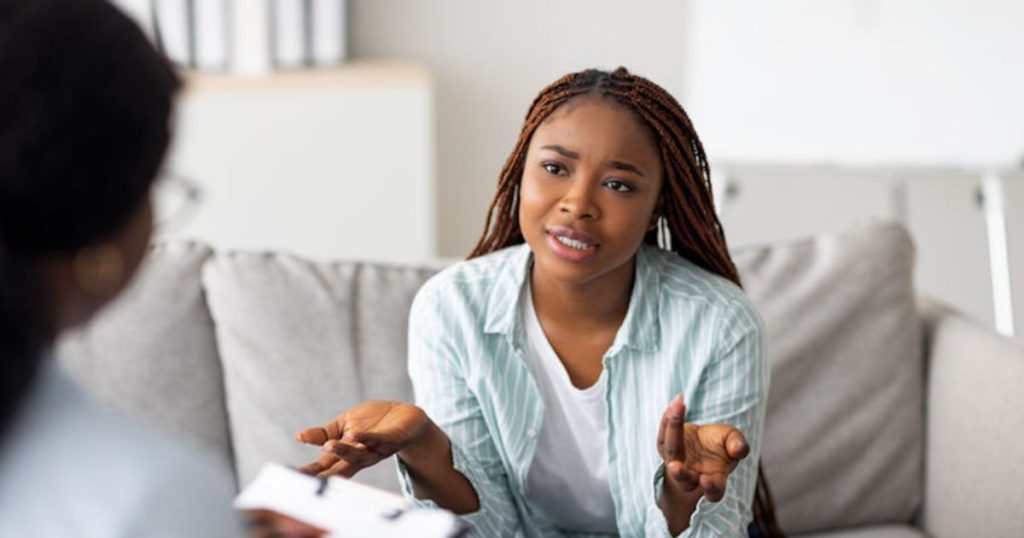In life’s journey, we often grapple with negative thoughts and behaviors that hinder our progress and well-being. These patterns can manifest as self-doubt, anxiety, depression, or destructive habits that keep us trapped in a cycle of dissatisfaction.
However, Cognitive-Behavioral Therapy (CBT) offers some hope. This widely acclaimed psychological approach empowers individuals to challenge and overcome negative thinking patterns and maladaptive behaviors.
In this blog, we will explore the transformative power of CBT, shedding light on its fundamental principles and techniques.
Defining CBT and How It Works

CBT, or Cognitive-Behavioral Therapy, is a widely recognized and evidence-based therapeutic approach to help individuals overcome psychological challenges. It combines cognitive therapy, which focuses on thoughts and beliefs, and behavioral therapy, which addresses actions and behaviors.
CBT operates on the premise that our thoughts, emotions, and behaviors are interconnected, influencing one another. CBT helps individuals develop healthier and more adaptive thinking methods by identifying and challenging negative or irrational thoughts.
Moreover, it encourages individuals to actively engage in behavioral experiments and practice new coping strategies, facilitating positive changes in their actions and behaviors. CBT empowers individuals to take control of their mental well-being and make meaningful progress toward achieving their therapeutic goals.
History and Evolution of CBT
The history and evolution of Cognitive-Behavioral Therapy (CBT) is traceable back to the mid-20th century.
You can find its roots in the work of psychologists such as Albert Ellis and Aaron Beck, who challenged the prevailing psychoanalytic approach by emphasizing the role of thoughts and beliefs in shaping human behavior and emotions.
CBT gained further recognition in the 1960s and 1970s as a therapeutic approach. It incorporated principles from behavioral psychology, focusing on observable behaviors and their reinforcement.
Over time, CBT expanded to encompass cognitive restructuring, helping individuals identify and modify distorted thinking patterns.
With its solid empirical foundation, CBT has continually evolved and diversified, developing various specialized branches like dialectical behavior therapy (DBT) and acceptance and commitment therapy (ACT).
Today, CBT is one of the most widely practiced and scientifically validated psychotherapeutic approaches, offering practical solutions for various mental health conditions.
Theoretical Framework of CBT

The theoretical framework of Cognitive-Behavioral Therapy (CBT) is rooted in several core principles. Firstly, it posits that our thoughts, emotions, and behaviors are interconnected and influence one another.
CBT emphasizes the role of cognitive processes in shaping our experiences and reactions to the world. Secondly, CBT acknowledges the influence of learning theory, particularly behavioral conditioning, on our behaviors and responses. It recognizes the impact of reinforcement and punishment in shaping behavioral patterns.
Additionally, CBT operates on the belief that individuals can become aware of their thoughts and ideas and can actively challenge and modify them. It focuses on helping individuals identify and replace negative or irrational thoughts with more realistic and adaptive ones.
Core Principles and Techniques of CBT
Cognitive-Behavioral Therapy (CBT) is a beacon of hope for those seeking to break free from negative thought patterns and self-defeating behaviors. Grounded in a robust theoretical framework, CBT operates on core principles and techniques that empower individuals to take charge of their mental well-being.
This next section will dive into the fundamental principles and techniques that form the backbone of CBT.
Cognitive Restructuring: Challenging Negative Thoughts
Cognitive restructuring is a therapeutic technique aimed at challenging and modifying negative thoughts. It involves recognizing and questioning negative, distorted, or irrational thinking patterns contributing to emotional distress.
By engaging in cognitive restructuring, individuals can gain a new perspective on their thoughts and replace negative beliefs with more realistic and positive ones.
Through consistent practice, cognitive restructuring empowers individuals to reframe their thoughts, cultivate resilience, and develop a more optimistic and balanced mindset, ultimately leading to improved emotional well-being.
This process typically involves identifying negative thoughts, examining the evidence supporting them, and evaluating alternative interpretations. It helps individuals recognize the role of cognitive biases and automatic negative thinking in shaping their emotions.
Behavioral Activation: Overcoming Inactivity and Developing Positive Habits
Behavioral activation is a therapeutic approach focusing on overcoming inactivity and developing positive habits. It aims to break the cycle of depression or other mental health issues by increasing engagement in rewarding activities and improving mood.
Individuals can gradually reintroduce pleasurable and meaningful activities by identifying and challenging negative thoughts contributing to inactivity.
Behavioral activation is a powerful tool for promoting mental well-being and breaking the cycle of inertia and negativity. Behavioral activation involves setting achievable goals, scheduling activities, and monitoring progress.
It emphasizes the importance of routine, social connections, and self-care. Through consistent practice, individuals learn to replace avoidance and withdrawal with active participation, leading to a sense of accomplishment, increased motivation, and a more fulfilling life.
Exposure Therapy: Confronting Fears and Anxieties

Exposure therapy is a widely used therapeutic technique that helps individuals confront and overcome fears and anxieties.
It involves gradually and systematically exposing individuals to the situations, objects, or thoughts that trigger their anxiety in a safe and controlled environment.
By facing their fears, individuals learn that their anxiety gradually diminishes. Exposure therapy stems from the principle of habituation, where repeated exposure to anxiety-provoking stimuli reduces the fear response.
There are various ways to conduct exposure therapy, such as imaginal exposure, where individuals vividly imagine feared situations, or in vivo exposure, where they directly confront real-life situations.
Through this process, individuals gain a sense of mastery and learn that they can tolerate and manage their anxieties effectively, leading to increased confidence and improved quality of life.
Relaxation and Mindfulness Techniques: Enhancing Self-awareness and Coping Skills
Relaxation and mindfulness techniques are valuable tools for enhancing self-awareness and coping skills. These practices involve intentionally focusing on the present moment and cultivating a non-judgmental and accepting attitude.
Through progressive muscle relaxation, deep breathing, and guided imagery, individuals can experience a sense of calm and peace, reducing stress and promoting overall well-being.
Mindfulness techniques, such as meditation and body scans, help individuals become aware of their thoughts, emotions, and bodily sensations without getting entangled in them.
This heightened self-awareness allows for more intentional responses to stressors and challenges.
By practicing these techniques regularly, individuals develop resilience, emotional regulation skills, and a greater ability to manage difficult situations. Relaxation and mindfulness techniques empower individuals to live more peaceful and fulfilling lives.
Applications of CBT in Various Mental Health Conditions
Cognitive-Behavioral Therapy (CBT) is a versatile and effective therapeutic approach that offers hope and healing to individuals grappling with various mental health conditions. From anxiety and depression to phobias and disorders, CBT has shown remarkable efficacy in addressing a wide range of psychological challenges.
Let’s dive in and explore the transformative applications of CBT across diverse mental health conditions.
CBT for Anxiety Disorders
CBT for anxiety disorders involves identifying and challenging irrational or distorted thinking patterns and replacing them with more realistic and adaptive ones.
CBT for anxiety disorders provides individuals with practical tools and strategies to manage their anxiety, leading to symptom reduction and improved functioning in daily life.
Behavioral techniques, such as response prevention and exposure, are used to confront feared situations and reduce avoidance behaviors gradually. Through this process, individuals learn to tolerate anxiety, develop coping skills, and break the cycle of anxiety.
CBT for Depression
CBT for depression focuses on identifying and challenging negative thought patterns and beliefs contributing to low mood and hopelessness. The goal is to replace these negative thoughts with more realistic and positive ones.
By setting achievable goals and engaging in pleasurable and rewarding activities, individuals can experience a sense of accomplishment and improve their mood.
CBT equips individuals with practical skills to cope with depressive symptoms, change unhelpful behaviors, and develop healthy coping strategies, ultimately leading to symptom reduction and improved overall well-being.
CBT for Post-Traumatic Stress Disorder
CBT for PTSD focuses on addressing the thoughts, beliefs, and behaviors that maintain symptoms related to the traumatic event. It involves cognitive restructuring to challenge and modify negative or distorted thoughts about the trauma and its consequences.
Through repeated exposure, individuals can learn to reduce avoidance and experience a decrease in distressing symptoms.
CBT for PTSD also incorporates skills training to manage anxiety, develop coping strategies, and enhance problem-solving abilities. By addressing the core symptoms of PTSD, CBT empowers individuals to regain control over their lives and promote healing and recovery.
CBT for Eating Disorders
CBT for eating disorders targets the underlying thoughts, beliefs, and behaviors contributing to disordered eating patterns.
It focuses on identifying and challenging distorted thoughts related to body image, food, and weight, then replaces them with more realistic and positive thoughts. CBT also addresses dysfunctional behaviors, such as restrictive eating, bingeing, and purging, by promoting healthier eating habits and regularizing meal patterns.
CBT for eating disorders aims to improve self-esteem, body image, and overall emotional well-being.
What Are the Benefits and Effectiveness of CBT?
CBT offers numerous benefits and has proven highly effective across various mental health conditions. It helps individuals develop practical skills and strategies to address negative thought patterns, beliefs, and behaviors contributing to their distress.
CBT promotes self-awareness, empowering individuals to identify and challenge unhelpful thinking and replace it with more realistic and adaptive thoughts.
It improves problem-solving skills, enhances emotional regulation, and fosters resilience. CBT’s structured and goal-oriented approach allows for measurable progress and sustainable changes.
How to Get Started with CBT?
Getting started with CBT therapy begins with seeking a qualified therapist or mental health professional trained in CBT techniques. Burns Virtual Psychological Solutions, led by Dr. Burns and her team, is dedicated to providing support and guidance. They offer a compassionate and personalized approach to help individuals and families navigate their mental health challenges. Contact us today!









